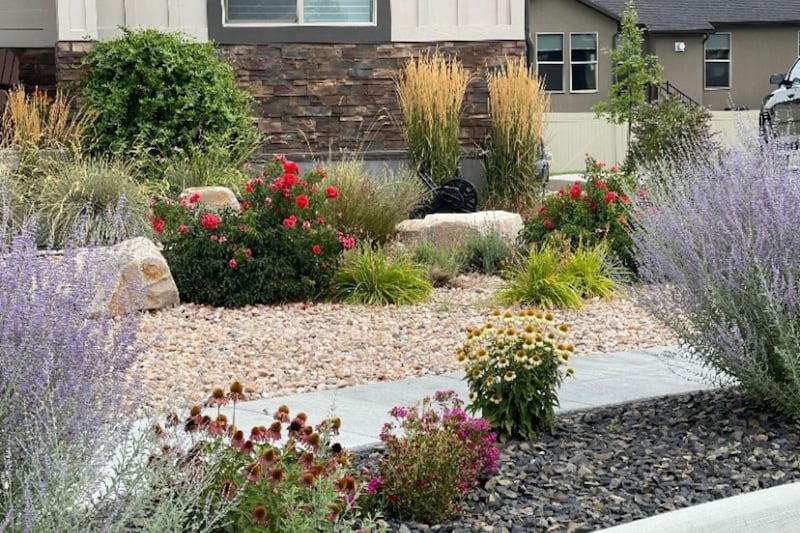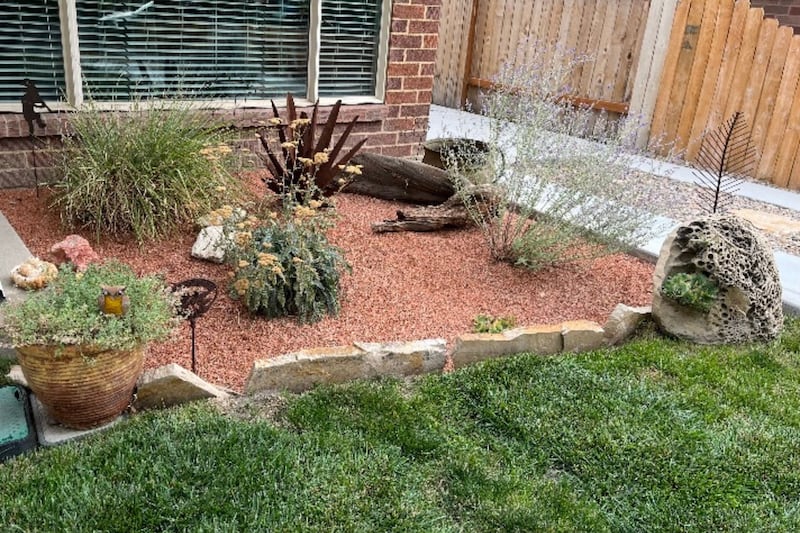The sweltering and unprecedented heat that gripped and held hostage much of the country — including Utah — this past summer has many folks reevaluating their landscaping choices.
In the past several weeks, I’ve walked and driven by dozens of properties throughout the Salt Lake Valley that are trading their Kentucky bluegrass for decorative rock or bark, and swapping their petunias and irises for yuccas and Russian sage.
If you are a property owner that is considering completely xeriscaping your yard or simply swapping out some of your thirsty plant varieties for drought-resistant options, here are a few things to keep in mind.
What does it mean to ‘xeriscape’? What are the benefits?
There is no specific model or rulebook when it comes to xeriscaping your yard, and not every design or interpretation is going to look the same. Generally, “xeriscaping is the practice of designing landscapes to reduce or eliminate the need for irrigation,” according to National Geographic.
If you live in Utah, the Salt Lake City government website lists the benefits of xeriscaping that range from attracting native species such as pollinators to reducing fertilizer and pesticide application.
The main advantage associated with xeriscaping is, of course, that it saves water. National Geographic reported that proponents of xeriscaping have said that it can reduce water usage by roughly 50% to 75%.
Start by visualizing your desired look
If you want to dip your toes into xeriscaping and still retain a small lawn for pets, children or simply for the perk of having grass, that is certainly an option. Xeriscaping doesn’t need to be done with an “all or nothing” approach. To brainstorm or get started, sites such as the Landscaping Network, as well as official city websites, can be helpful.
The “best xeriscaping” landscape has roughly 50% plant coverage with small plants less than 2 feet in height, Cynthia Bee, a landscape architect and outreach coordinator at Jordan Valley Water Conservancy District, told KSL.com.
Not sure where to start? Looking around neighborhoods near you can be a great source of inspiration. “I swear we’re finding in every neighborhood that everyone is waiting and watching, and when they see someone do it and have a beautiful outcome ... that’s what catches on,” says Bee.

Research native, drought-tolerant plants
There are hundreds of desert plants native to Utah, and it’s important to research which will work best for you and your yard. But don’t be intimidated or feel strictly limited to desert climate varieties — you can certainly mix and match plants. The main benefit of plants that are native to Utah is that they generally require less water than non-native plants.
Salt Lake City’s official website provides a guide to water-saving landscaping, as well as a list of plants that are native to Utah. Getting to know the ins and outs of native Utah plants can help you plan out the level of maintenance to expect and envision the colorful landscape you can create.

What is the cost of xeriscaping? How long does it take?
The cost of xeriscaping a yard varies based on property size, materials, design and labor. It can also depend on whether or not you work with a conservation program, such as Jordan Valley Water Conservancy District.
There are also possible opportunities for incentives and rebates, depending on location and availability. According to Fox 13, Utah Water Savers offers a rebate program that has doubled in interest year over year for the past five years as the demand for xeriscaping is skyrocketing. If you are considering xeriscaping, I would recommend researching whether or not your city offers a program such as this — in the interest of getting the biggest bang for your buck.
The amount of money and time it takes to xeriscape a yard also depends on whether or not you hire out the labor or choose to take on the task yourself. Fox 13 reported that if you choose to hire a professional, “projects can take anywhere from a week or two to complete and will vary in price based on the size of your yard and the kind of design you choose.”
If you do decide to hire a landscaping company, patience is key. Timothy Langan of Silver Sage Xeriscape and Design told Fox 13 that “we have seen dramatic increase every single year, more so in the last year because of the drought conditions. We used to joke about having an offseason, now we just have a slow season.”

